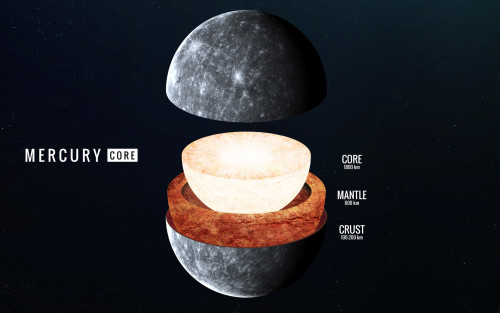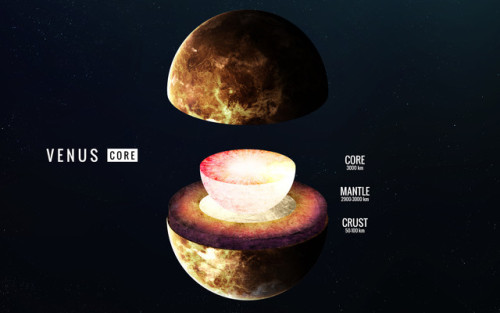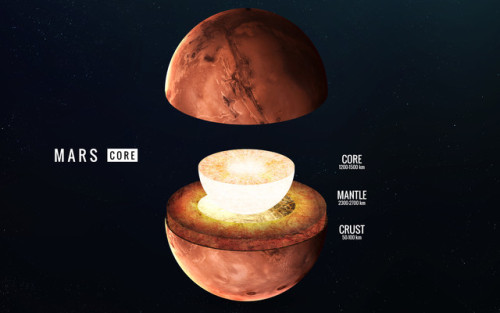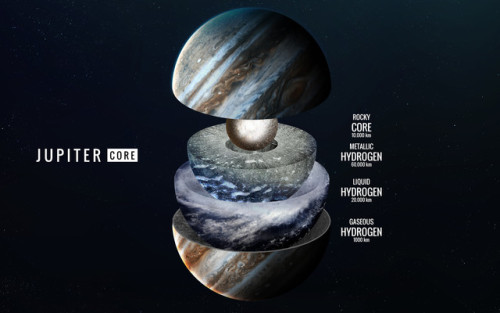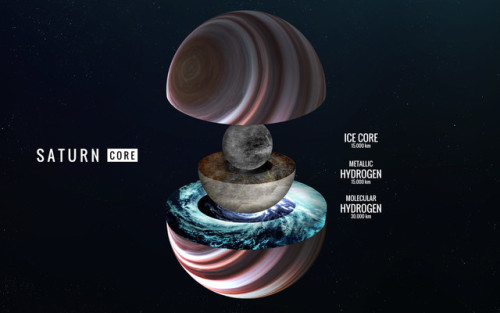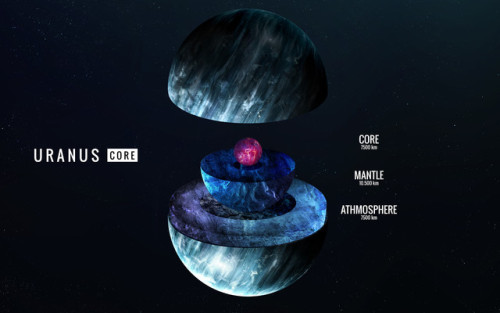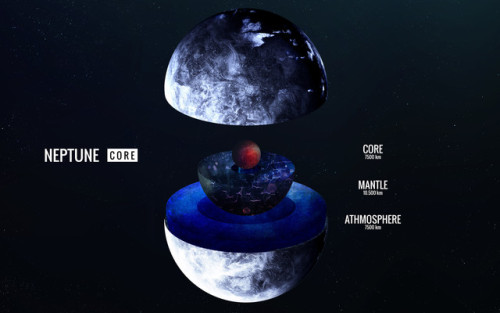A Young Star Rebels Against Its Parent Cloud

A Young star rebels against its parent cloud
js
More Posts from Fillthevoid-with-space and Others

The first episode is here! I have never done this before and right now, I’m planning to put up a podcast every two weeks.
Below the cut is some elaboration on the episode itself, including my sources, music credits, a glossary, and a transcript (not an exact record of this episode, but it’s the script I was working with and it’s both conversational and also a little less rambling than what I actually said). I’m on Twitter now, too: @HDandtheVoid. I don’t know what I’ll put there yet except maybe fun little facts and, of course, notifications on when an episode goes up.
Let me know what you think of this episode, let me know what you think I should research next*, tell me a fun space fact… anything’s helpful at this point!
*(Move fast if you feel strongly about what I research next, though, cuz I have to get it done by April 24th—I don’t mention it in the podcast but this is me telling you now so I am held accountable; April 24th is the next podcast.)
Glossary:
cosmic microwave background radiation—the electromagnetic radiation left over from the time of recombination in Big Bang cosmology.
cosmology—the study of the properties of our universe as a whole.
heliacal rising—when a star or constellation rises at the same time or just before the sun.
parapegma—a list of star rising times.
retrograde—the apparent motion of a planet in a direction opposite to that of other bodies within its system, as observed from a particular vantage point.
sidereal year—the time required for the earth to complete an orbit of the sun relative to the stars.
star catalog—an astronomical catalog that lists stars.
star chart/map—A star chart or star map is a map of the night sky. Astronomers divide these into grids to use them more easily. They are used to identify and locate astronomical objects such as stars, constellations, and galaxies.
tropical year—the interval at which seasons repeat and the basis for the calendar year.
Wilkinson Microwave Anisotropy Probe—a spacecraft operating from 2001 to 2010 which measured temperature differences in the cosmic microwave background radiation leftover from the Big Bang. (I said ‘anistropy’ in the podcast, whoops)
Script/Transcript (It’s not exactly what I said, but it’s what I was going off of. It’s conversational and it’s less rambly than what I actually said)
Sources:
Cosmic microwave background radiation info
More Big Bang info
Timeline of the Big Bang
Babylonian constellation/zodiac list
Babylonian star catalog
Retrograde motion
Evans, James. The History and Practice of Ancient Astronomy. Oxford UP: New York, 1998.
...and class notes from a class on Ancient Astronomy I took with Prof. James Evans.
My argument for using Wikipedia is that it is shockingly accurate when it comes to ancient material. I’m going to try to stick to academic and government sources though.
Intro Music: ‘Better Times Will Come’ by No Luck Club off their album Prosperity
Outro Music: ‘Fields of Russia’ by Mutefish off their album On Draught
Comet That Took a Century to Confirm Passes by Earth
NASA Goddard Space Flight Center logo. March 31, 2017 On April 1, 2017, comet 41P will pass closer than it normally does to Earth, giving observers with binoculars or a telescope a special viewing opportunity. Comet hunters in the Northern Hemisphere should look for it near the constellations Draco and Ursa Major, which the Big Dipper is part of. Whether a comet will put on a good show for observers is notoriously difficult to predict, but 41P has a history of outbursts, and put on quite a display in 1973. If the comet experiences similar outbursts this time, there’s a chance it could become bright enough to see with the naked eye. The comet is expected to reach perihelion, or its closest approach to the sun, on April 12.
Image above: In this image taken March 24, 2017, comet 41P/Tuttle-Giacobini-Kresák is shown moving through a field of faint galaxies in the bowl of the Big Dipper. On April 1, the comet will pass by Earth at a distance of about 13 million miles (0.14 astronomical units), or 55 times the distance from Earth to the moon; that is a much closer approach than usual for this Jupiter-family comet. Image Credits: image copyright Chris Schur, used with permission. Officially named 41P/Tuttle-Giacobini-Kresák to honor its three discoverers, the comet is being playfully called the April Fool’s Day comet on this pass. Discovery credit goes first to Horace Tuttle, who spotted the comet in 1858. According to the Cometography website, 41P was recognized at the time as a periodic comet — one that orbits the sun — but astronomers initially were uncertain how long the comet needed to make the trip. The comet was rediscovered in 1907 by Michael Giacobini but not immediately linked to the object seen in 1858. Later, the astronomer Andrew Crommelin determined that the two observations had been of the same object and predicted that the comet would return in 1928 and 1934, according to the Cometography entry for the comet. However, the object was not seen then and was considered lost. In 1951, L’ubor Kresák discovered it again and tied it to the earlier observations. A member of the Jupiter family of comets, 41P makes a trip around the sun every 5.4 years, coming relatively close to Earth on some of those trips. On this approach, the comet will pass our planet at a distance of about 13 million miles (0.14 astronomical units), or about 55 times the distance from Earth to the moon. This is the comet’s closest approach to Earth in more than 50 years and perhaps more than a century. For scientists, 41P’s visit is an opportunity to fill in details about the comet’s composition, coma and nucleus.
Image above: An artist’s illustration of a group of comet enthusiasts. Image Credits: NASA’s Goddard Space Flight Center. “An important aspect of Jupiter-family comets is that fewer of them have been studied, especially in terms of the composition of ices in their nuclei, compared with comets from the Oort cloud,” said Michael DiSanti of NASA’s Goddard Space Flight Center in Greenbelt, Maryland. He and his team will be observing 41P on April 1 using NASA’s Infrared Telescope Facility in Hawaii. Astronomers will try to determine characteristics such as how quickly 41P’s nucleus rotates, which provides clues about how structurally sound the nucleus is, and whether any changes can be documented in the coma and tail. Observers also will look for outbursts, which are an indication of how active a comet is. By cataloging the subtle, and sometimes not-so-subtle, differences among comets, researchers can construct a family tree and trace the history of how and where these objects formed as the solar system was taking shape. “Comets are remnants from the early solar system,” said DiSanti. “Each comet that comes into the neighborhood of Earth gives us a chance to add to our understanding of the events that led to the formation of our own planet.” Related links: Comets: http://www.nasa.gov/comets Goddard Space Flight Center: https://www.nasa.gov/centers/goddard/home/index.html Images (mentioned), Text, Credits: NASA’s Goddard Space Flight Center, by Elizabeth Zubritsky/Rob Garner. Greetings, Orbiter.ch Full article

(I broke the last link, whoops)
Another week of theory, but no fun new particles. Instead, hear me try to say a lot of names of scientists or their eponymous equations as I talk about dark energy in the universe! Learn what some astronomers think it is and why other astronomers think there are better explanations for certain nutty galactic phenomena.
Below the cut are my sources, music credits, a vocab list, and the transcript of this episode. Let your voice be heard and tell me what you think I should research next by messaging me here, tweeting at me at @HDandtheVoid, or asking me to my face if you know me in real life. And please subscribe to the podcast on iTunes, rate it and maybe review it, and tell friends if you think they’d like to listen!
(If anything about dark matter or dark energy or cosmic microwave background radiation confused you over the past few podcasts, for sure send me your questions so I can ask someone more qualified than me—my doctorate student friend! My thoughts on the next episode are still the Voyager golden records, space race history, the transit of Venus, the Moon landing, Edmond Halley, or Dark Sky Preserves and it will be up on November 20th.)
Glossary
baryons - heaviest particles. Ex. Protons, neutrons. In astroparticle physics, electrons are included in baryonic matter.
cosmic microwave background radiation - the electromagnetic radiation left over from the time of recombination in Big Bang cosmology.
dark energy - a theoretical force made up of unknown, undetectable energy. It is used to explain why the universe is expanding more rapidly over time instead of slowing its expansion.
dark matter - a theoretical mass made up of unknown particles that have not been created on Earth. It is used to explain why galaxy clusters have 10x the mass that their light output suggests they would have; why distant stars on the edges of spiral galaxies orbit at the same speed as stars near the center of the galaxy; and the accretion of gases that created galaxies at the beginning of the universe.
fundamental forces - four fundamental forces in our current model of the universe: the strong and weak nuclear forces, the electromagnetic force, and gravity.
gravitational lensing - when light from more distant sources passes near a massive star, galaxy, or galaxy cluster and the object’s gravity bends the light like a lens to provide a warped angle view of space.
Transcript
Sources
Dark energy via NASA
Dark energy via Hubble
“The strangeness of dark energy is thrilling.”
Fundamental forces via Georgia State University
Dark energy via Science Magazine (April 2017)
László Dobos: “We assume that every region of the universe determines its expansion rate itself.”
Dark energy and the South Pole Telescope via Smithsonian Magazine (April 2010)
“Knowing what dark matter is would help scientists think about how the structure of the universe forms. Knowing what dark energy does would help scientists think about how that structure has evolved over time—and how it will continue to evolve.”
Intro Music: ‘Better Times Will Come’ by No Luck Club off their album Prosperity
Filler Music: ‘Even The Darkness Has Arms’ by The Barr Brothers off their album The Sleeping Operator
Outro Music: ‘Fields of Russia’ by Mutefish off their album On Draught
Talking to a real cosmonaut
I met cosmonaut Sergei Volkov the other day as well as astronaut Andreas Mogensen (yeah I was geeking out hard) and I asked Sergei, after a total of 1½ year in space, what came as the biggest surprise and I expected this grand answer..
but he was like “in space, your t-shirt is floating too. It’s not hanging on you. It’s a weird sensation. There’s not really anything in space that stresses your body which is why we exercise.. like Andreas said, first time in space, you forget that you can just leave your fork floating while you’re opening your food. you try and put it down on a surface or hold everything in your hand like you’re afraid to drop it. And the fact that you can work 10 hours and concentrate really hard and not be sore in your neck.. Because there’s no gravity pulling at you. Dreams change as well after a while. I would dream about doing stuff on the space station but in my dreams there was gravity. It’s such a basic human thing, gravity.”
on the subject of returning back to earth: “Once you get back to earth, the first few days are tough. I took a shower instead of a bath, and it felt like the water was crushing me, I had to step out of the shower, it was just too overwhelming. Holding up your cell phone to your ear, It’s like holding a brick.”
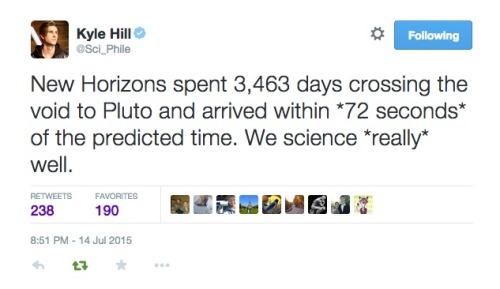
Its pretty incredible how accurate the science of astrophysics has gotten. New Horizons actually arrived 72 seconds early after travelling for almost 10 years straight to its destination.

One-year countdown to solar eclipse, August 21, 2017: path of totality overlaid on U.S. population density and interstate map.
Hahaha, right after I start out a podcast talking about how we’ll never poke the Sun, it turns out we’re sending a probe to do just that!
Solar System: Things to Know This Week
Mark your calendars for summer 2018: That’s when we’re launching a spacecraft to touch the sun.
In honor of our first-ever mission to the heart of the solar system, this week we’re delving into the life and times of this powerful yellow dwarf star.

1. Meet Parker
Parker Solar Probe, our first mission to go to the sun, is named after Eugene Parker, an American astrophysicist who first theorized that the sun constantly sends out a flow of particles and energy called the solar wind. This historic mission will explore one of the last regions of the solar system to be visited by a spacecraft and help scientists unlock answers to questions they’ve been pondering for more than five decades.

2. Extra SPF, Please
Parker Solar Probe will swoop within 4 million miles of the sun’s surface, facing heat and radiation like no spacecraft before it. The mission will provide new data on solar activity to help us better understand our home star and its activity - information that can improve forecasts of major space-weather events that could impact life on Earth.

3. Majorly Massive
The sun is the center of our solar system and makes up 99.8 percent of the mass of the entire solar system. If the sun were as tall as a typical front door, Earth would be about the size of a nickel.
4. Different Spin
Since the sun is not a solid body, different parts of the sun rotate at different rates. At the equator, the sun spins once about every 25 days, but at its poles the sun rotates once on its axis every 36 Earth days.

5. Can’t Stand on It
The sun is a star and a star doesn’t have a solid surface. Rather, it’s a ball of ionized gas 92.1% hydrogen (H2) and 7.8% helium (He) held together by its own gravity.
6. Center of Attention
The sun isn’t a planet, so it doesn’t have any moons. But, the sun is orbited by eight planets, at least five dwarf planets, tens of thousands of asteroids, and hundreds of thousands to trillions of comets and icy bodies.

7. It’s Hot in There
And we mean really, really hot. The temperature at the sun’s core is about 27 million degrees Fahrenheit. However, its atmosphere, the corona, can reach temperatures of 3 million degrees. (That’s as if it got hotter the farther away you got from a fire, instead of cooler!) Parker Solar Probe will help scientists solve the mystery of why the corona’s temperature is so much higher than the surface.

8. Travel Conditions
The sun influences the entire solar system, so studying it helps us better understand the space weather that our astronauts and spacecraft travel through.
9. Life on the Sun?
Better to admire from afar. Thanks to its hot, energetic mix of gases and plasma, the sun can’t be home to living things. However, we can thank the sun for making life on Earth possible by providing the warmth and energy that supply Earth’s food chain.
10. Chance of a Lifetime
Last but not least, don’t forget that the first total solar eclipse to sweep across the U.S. from coast-to-coast since 1918 is happening on August 21, 2017. Our toolkit has you need to know to about it.
Want to learn more? Read our full list of the 10 things to know this week about the solar system HERE.
Make sure to follow us on Tumblr for your regular dose of space: http://nasa.tumblr.com

I had to skip last week to finish an article on STEM but it got me a really awesome intro to a very serious episode. Learn this week about 1) Sally Ride (a bit, just like the highlight reel on her) 2) NASA’s space shuttle program 3) the Challenger disaster that occurred January 28, 1986. It was the anniversary of this tragedy yesterday and I wanted to learn more about it and why it happened and what, ultimately, came out of that difficult time in the space shuttle program.
I have a quick and easy way for you to cut out listening to the actual recap of the disaster if you don’t want to hear about it and just want to hear the fun space shuttle facts and the changes that NASA undertook in learning from Challenger’s destruction. Below the cut are my sources, music credits, a vocab list, and the transcript of this episode. I’ve bolded those sources I mention in the podcast, and I do have a trigger warning for the actual, live-coverage footage of the Challenger disaster. Please let me know what you think I should research next by messaging me here, tweeting at me at @HDandtheVoid, or asking me to my face if you know me. I’d love it if you would subscribe on iTunes (especially since I seem to have so many problems this month with consistent timing), rate my humble little podcast and maybe review it, and tell friends if you think they’d like to hear it!
(My thoughts on the next episode are national radio quiet zones, or I could go into the transit of Venus. The next episode will go up February 12th.)
Glossary
gimbaled - moveable. In a gimbaled thrust system for rockets, the exhaust nozzel of the rocket can be swiveled from side to side, which changes the direction of that thrust relative to rocket’s center of gravity.
pitch - in flight, this is rotation around the side-to-side axis. If the object’s nose points upwards or downwards, this is changing its pitch.
roll - in flight, this is rotation around the front-to-back axis. If the object’s wings spin from horizontal to vertical, it’s rolling.
yaw - in flight, this is rotation around the vertical axis. If the pilot turns the object so they can see more to the left or to the right, with no change in the horizon’s position, this is changing its yaw.
Script/Transcript
Sources
Sally Ride (for K-4) via NASA
Sally Ride bio via NASA
Sally Ride via the Smithsonian National Air and Space Museum
Sally Ride and her sexuality via Slates blog ‘Outward’ (May 2014)
Sexual Orientation Discrimination Policy via NASA
“Employees should expect to find a diversity of sexual orientations at NASA. In the past, it was common practice to fire or to refuse to hire suspected homosexuals in the Federal workplace. Employees have been physically threatened, verbally abused, and subjected to hostile working conditions. Laws and policies have changed, and all NASA employees need to be aware of their responsibility to prevent this form of discrimination and to ensure that lesbian, gay, bisexual, and transgender (LGBT) individuals are an accepted and valued part of the diverse NASA workforce.”
Space shuttle era via NASA
1983-1986: The Missions and History of Space Shuttle Challenger via NASA Spaceflight
Space shuttle process via NASA (archived)
Space shuttle components via NASA
Gimbaled thrust via NASA
Roll, Pitch, and Yaw via the Smithsonian National Air and Space Museum
Typical shuttle mission via NASA
Challenger via Space.com (Nov 2017)
Challenger disaster via History.com — contains an autoplay video
Challenger disaster live on CNN via YouTube (Jan 2011)—tw: destruction occurs at timecode 1:35
Challenger myths debunked via National Geographic (Jan 2016)
Intro Music: ‘Better Times Will Come’ by No Luck Club off their album Prosperity
Filler Music: ‘Repent’ by Dreamend off their album And So I Ate Myself, Bite By Bite, which has cover art that scared the hell out of me when my friend gave it to me because I was on painkillers for a shattered radial head. Really good band, though.
Outro Music: ‘Fields of Russia’ by Mutefish off their album On Draught

The last episode I posted went up on a very special birthday that I failed to acknowledge or, well, realize was even happening until I saw it on the Google homepage. So, to rectify this oversight, I’m talking about the history of cosmological photography and how we reached the high point of the Hubble Space Telescope, which turned 27 this past April 24th!
Below the cut is some elaboration on the episode itself, including my sources, music credits, a glossary, and a transcript (not an exact record of this episode, but it’s the loose, fairly conversational script I was working with). I mention a couple of books and authors in this episode so if you want to see that written down, those are there too (one of the authors is Chinese and listen, Chinese is at least as hard for me to pronounce as French. I did try though). I’m also on Twitter at @HDandtheVoid, though I keep forgetting I have it. Talk to me on there and maybe I won’t forget!
Let me know what you think of this episode, let me know what you think I should research next*, tell me a fun space fact… anything’s helpful at this point!
*(Move fast if you feel strongly about what I research next, though, cuz I have to get it done by May 22nd! My thoughts were henges because I didn’t get to them this week, probes and satellites, the planets, spectroscopy, or maybe black holes? Please hit me up by May 11th so I can start working on it!)
Glossary:
catadioptric/Cassegrain telescope - use lenses and mirrors in combination.
focal length - the distance between the lens and the image sensor of a camera when the subject of the photo is in focus. According to the Nikon website this is usually measured in millimeters, but I’ll take a wild guess and say it’s probably easier to measure it in feet on the Hubble Telescope because that thing is school bus-sized.
Lagrange points - five points where three bodies can orbit each other, yet stay in the same position relative to each other in a stable configuration. L1-L3 are in line with each other, while L4 and L5 are at the points of equilateral triangles in the configuration. See an example specific to the James Webb Telescope in the link.
objective lens - the optical element that gathers light from the object being observed and focuses the light rays to produce an image at the focal point.
reflection telescope - reflects light rays off the concave surface of a parabolic mirror to get an image of a distant object. Higher contrast image, worse color quality.
refraction telescope - uses convex lenses to focus a far-off, dim image. Good color quality, poor contrast.
satellites - objects that move around a larger object. Can be man-made or natural. Geostationary satellites orbit west to east over the equator, moving in the same direction and at the same rate as Earth. Polar-orbiting satellites orbit north to south, which allows them to scan the Earth along longitude lines.
Wilkinson Microwave Anisotropy Probe—a spacecraft operating from 2001 to 2010 which measured temperature differences in the cosmic microwave background radiation leftover from the Big Bang. It orbited at L2, just like the James Webb Telescope will!
Script/Transcript (I do tend to embellish in the moment of recording so it’s not exact, but all the facts are there and I can’t know a fact and not talk about it so trust me, all you’re missing is probably another swear word or two)
Sources:
Facts about telescopes via the Naperville Astronomical Association
More facts about telescopes via Western Washington University
Earth’s atmosphere definition via the Encyclopedia Britannica Online
Correcting for atmospheric interference in astronomical imaging
Info on satellites for K-4th grade via NASA
Info on satellites for 5th-8th grade via NASA
What focal length means in photography via Nikon (the camera brand)
Hermann Oberth’s museum website
The history of NASA’s Orbiting Astronomical Observatories, which an older British gentleman seems to like enough to run a website about it
The history of OAO-3 aka Copernicus via NASA
Info on the Hubble Space Telescope for K-4th grade via NASA
Hubble-T’s 25th anniversary website, which I highly recommend. The timeline is a dream come true in terms of organization and brevity. It was last updated in December 2014, though, since that was when the Hubble was 25, so not a lot of new info there.
What the Hubble Space Telescope looks like, all its parts, and some of its history
What Hubble-T is looking at right now and why
The history of maintenance missions to the Hubble-T
Hubble: The Beginning, a 4-minute documentary video with a couple interviews, including Nancy Roman!
Hubble’s YouTube channel!!!!!!!!
Spitzer Space Telescope website
James Webb Space Telescope website
Hirshfeld, Alan. Starlight Detectives. Bellevue Library Press: NY, 2014.
Liu, Cixin. The Three-Body Problem. Trans. Ken Liu. Tor Books: NY, 2016.
Intro Music: ‘Better Times Will Come’ by No Luck Club off their album Prosperity
Filler Music: ‘Supermassive Black Hole’ by Muse off their album Black Holes and Revelations
Outro Music: ‘Fields of Russia’ by Mutefish off their album On Draught
-
 meditationrelaxationmusic reblogged this · 4 years ago
meditationrelaxationmusic reblogged this · 4 years ago -
 mashiroshiina234 liked this · 5 years ago
mashiroshiina234 liked this · 5 years ago -
 stefan13exe liked this · 5 years ago
stefan13exe liked this · 5 years ago -
 unknownd0m0 liked this · 5 years ago
unknownd0m0 liked this · 5 years ago -
 eclectic2017 reblogged this · 5 years ago
eclectic2017 reblogged this · 5 years ago -
 dellerino liked this · 5 years ago
dellerino liked this · 5 years ago -
 lifeofhancomic liked this · 5 years ago
lifeofhancomic liked this · 5 years ago -
 blood-trip-god liked this · 5 years ago
blood-trip-god liked this · 5 years ago -
 itsasmallghost liked this · 5 years ago
itsasmallghost liked this · 5 years ago -
 stupidly-curious-at-best liked this · 5 years ago
stupidly-curious-at-best liked this · 5 years ago -
 shawnarichauthor liked this · 5 years ago
shawnarichauthor liked this · 5 years ago -
 void-tiger reblogged this · 5 years ago
void-tiger reblogged this · 5 years ago -
 void-tiger liked this · 5 years ago
void-tiger liked this · 5 years ago -
 dbdude334 liked this · 5 years ago
dbdude334 liked this · 5 years ago -
 wisent15 reblogged this · 5 years ago
wisent15 reblogged this · 5 years ago -
 ratherinterestingmilkshake liked this · 5 years ago
ratherinterestingmilkshake liked this · 5 years ago -
 jeebssred liked this · 5 years ago
jeebssred liked this · 5 years ago -
 that-spider-fan-over-there liked this · 5 years ago
that-spider-fan-over-there liked this · 5 years ago -
 sirdragonslot3 liked this · 5 years ago
sirdragonslot3 liked this · 5 years ago -
 miyaluvvsyou liked this · 5 years ago
miyaluvvsyou liked this · 5 years ago -
 therealsirsticker liked this · 5 years ago
therealsirsticker liked this · 5 years ago -
 dreamlapine liked this · 5 years ago
dreamlapine liked this · 5 years ago -
 notisaidthechicken liked this · 5 years ago
notisaidthechicken liked this · 5 years ago -
 cosmic-ricochet liked this · 5 years ago
cosmic-ricochet liked this · 5 years ago -
 cackling-beast reblogged this · 5 years ago
cackling-beast reblogged this · 5 years ago -
 cackling-beast liked this · 5 years ago
cackling-beast liked this · 5 years ago -
 the-honeymoon-avenue liked this · 5 years ago
the-honeymoon-avenue liked this · 5 years ago -
 spideyrox liked this · 5 years ago
spideyrox liked this · 5 years ago -
 kingragnarok25 reblogged this · 5 years ago
kingragnarok25 reblogged this · 5 years ago -
 kingragnarok25 liked this · 5 years ago
kingragnarok25 liked this · 5 years ago -
 ausevor reblogged this · 5 years ago
ausevor reblogged this · 5 years ago -
 ausevor liked this · 5 years ago
ausevor liked this · 5 years ago -
 delightfully-anonymous liked this · 5 years ago
delightfully-anonymous liked this · 5 years ago -
 jupiterprincesshouou liked this · 5 years ago
jupiterprincesshouou liked this · 5 years ago
A podcast project to fill the space in my heart and my time that used to be filled with academic research. In 2018, that space gets filled with... MORE SPACE! Cheerfully researched, painstakingly edited, informal as hell, definitely worth everyone's time.
243 posts
